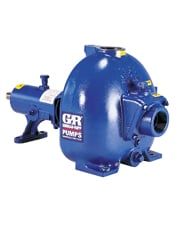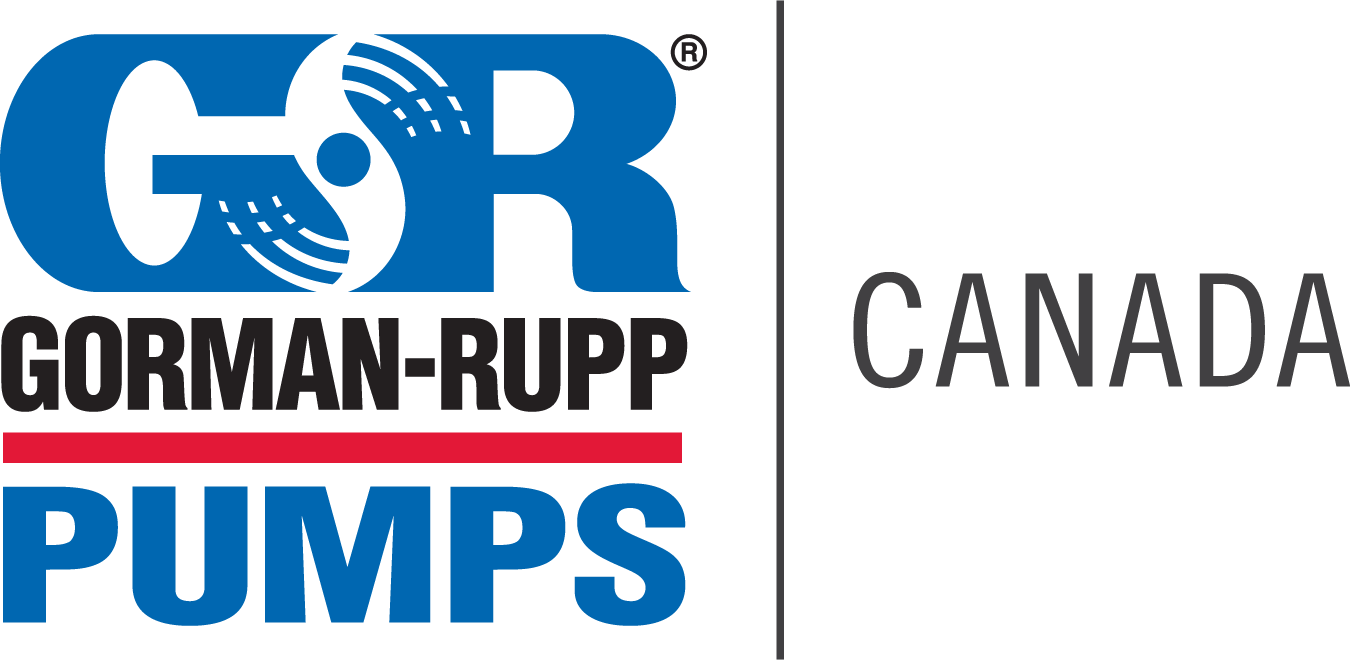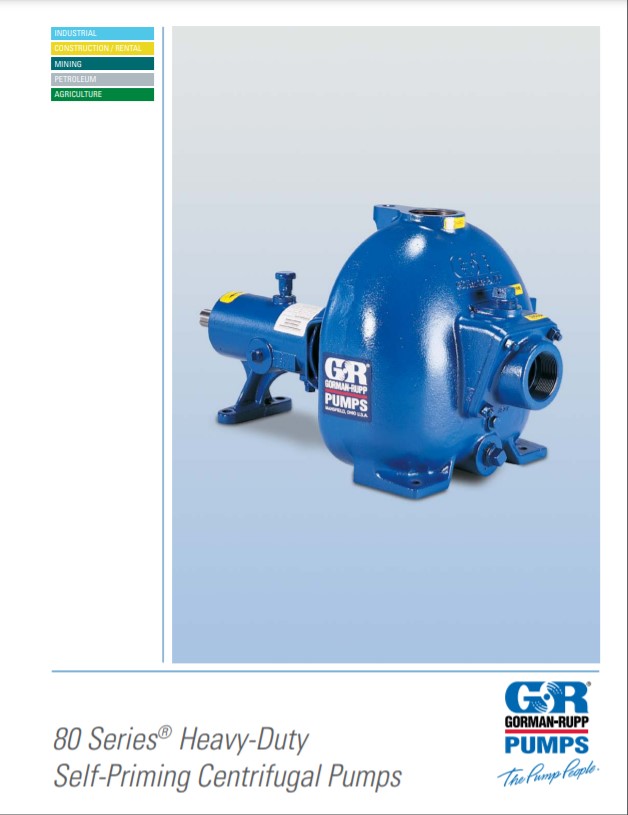Gorman-Rupp 80 series self-priming pumps are designed for non-stop workloads. The straight-in-suction design of these high-efficiency pumps guarantees quick, positive self-priming and allows them to operate at high suction levels than most other self-priming centrifugal pumps. Liquid enters directly into the impeller eye. A suction check valve presents in-line return flow when the pump is shut off. And, because 80 Series pumps have few moving parts, maintenance is minimal. 80 Series pumps are available with self-lubricated mechanical shaft seals.
Gorman-Rupp 80 Series Self-Priming Pumps Specifications:
| Size: | 1-1/4″ (31.25 mm) 1-1/2″ (37.5 mm) 2″ (50 mm) 3″ (75 mm) 4″ (100 mm) 6″ (150 mm) 8″ (200 mm) 10″ (250 mm) |
| Max Capacity: | 2,800 GPM (177 lps) |
| Max Head: | 205′ (62 m) |
| Max Solids: | 2.5″ (64 mm) |
| Max Temperature: | 160 F (71 C) |
| Materials of Construction: | Cast Iron Stainless Steel |
Gorman-Rupp 80 Series Self-Priming Pumps Features:
– Straight-In Suction Design: Exclusive 80 Series pump design provides higher suction lift, increased efficiency and allows pumps to operate at higher suction lifts than most other self-priming centrifugal pumps.
– Multiple Seal Options: 80 Series pumps are available with Gorman-Rupp grease seal, mechanical shaft seal, depending on pump application.
– Replaceable Wearplate: Replaceable wearplate provides maximum operating efficiency at all times. No expensive castings to replace. Extra-thick construction for life.
– Drive Variations: 80 Series pumps are available as basic units for connection to customers’ power source or may be flex-coupled or V-belt driven by an electric motor. Pumps can also be powered by gasoline or diesel engines.
Applications Include:
- Pumping solids
- Pumping sludge
- Pumping wastewater
- Pumping industrial wastewater
- Pumping slurries
- Sump pump
- Pumping drilling mud
- Pumping frac water
- Pumping waste oil
- De-watering pump
Interchangeable With:
- Flygt
- Cornell
- Pioneer
- Weir Self Priming
Self-Priming Pump Basics Pt. 1: Introduction
Self-Priming Pump Basics Pt. 2: Failure to Prime
.Self-Priming Applications Pt. 3: Air Entrainment .


